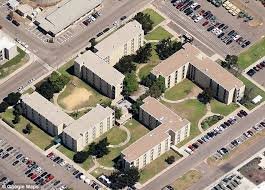AnonyJ
Captainess Sensible
- Joined
- Nov 1, 2015
- Messages
- 1,923
- Location
- Having-a-nice-cup-of-tea-and-a-sit-down-shire
Hi all 
I've been listening to some very interesting audiobook academic lectures from The Modern Scholar series [US University academics in recorded lectures in 30 minute sections, for home study etc]
One series, about 8 hours long 'Myths and Mysteries in Archaeology' by Susan A. Johnston gave me much food for thought. She is an archaeologist specialising in ancient Irish sites but seems to be very knowledgeable about the general field of early human history.
Several of her lectures debunk some of the crazier Von Danniken kind of explanations that have gained popular traction and one of her points is how 'presentism' and also a cultural/racial bias shades our judgement: For example, why do we have no trouble believing that the Parthenon in Greece was built by humans in prehistory/early history but that some of the Maya constructions couldn't have been? That Stonehenge was erected by early Britons but that the people who created the Easter Island statues, Pyramids or Sphinx had help from aliens?
According to Wikipedia "In literary and historical analysis, presentism is the anachronistic introduction of present-day ideas and perspectives into depictions or interpretations of the past. Some modern historians seek to avoid presentism in their work because they consider it a form of cultural bias, and believe it creates a distorted understanding of their subject matter"
She points out a rather unpleasant European-centred view of ancient monuments and buildings that is sometimes exhibited by believers that ancient people in south America and Africa must have had help from mysterious 'others'. She also argues that by believing in such theories without basis in the archaeological facts (so far) is actually to try to deny these ancient people their achievements. For example, European cathedrals of the 12th century were built at the same time as the wonderful Easter Island moai but no-one questions the cathedrals as mysterious. Similar motivations for building them both seem likely.
I found it very sensible and rational, drawing entirely on archaeological evidence. I liked the section on the pyramids of Giza and the descriptions of the excavated workers' villages and burials, plus workers' grafitti carved into the inward-facing surfaces of the blocks! And no, they weren't Hebrew slaves either
I've been listening to some very interesting audiobook academic lectures from The Modern Scholar series [US University academics in recorded lectures in 30 minute sections, for home study etc]
One series, about 8 hours long 'Myths and Mysteries in Archaeology' by Susan A. Johnston gave me much food for thought. She is an archaeologist specialising in ancient Irish sites but seems to be very knowledgeable about the general field of early human history.
Several of her lectures debunk some of the crazier Von Danniken kind of explanations that have gained popular traction and one of her points is how 'presentism' and also a cultural/racial bias shades our judgement: For example, why do we have no trouble believing that the Parthenon in Greece was built by humans in prehistory/early history but that some of the Maya constructions couldn't have been? That Stonehenge was erected by early Britons but that the people who created the Easter Island statues, Pyramids or Sphinx had help from aliens?
According to Wikipedia "In literary and historical analysis, presentism is the anachronistic introduction of present-day ideas and perspectives into depictions or interpretations of the past. Some modern historians seek to avoid presentism in their work because they consider it a form of cultural bias, and believe it creates a distorted understanding of their subject matter"
She points out a rather unpleasant European-centred view of ancient monuments and buildings that is sometimes exhibited by believers that ancient people in south America and Africa must have had help from mysterious 'others'. She also argues that by believing in such theories without basis in the archaeological facts (so far) is actually to try to deny these ancient people their achievements. For example, European cathedrals of the 12th century were built at the same time as the wonderful Easter Island moai but no-one questions the cathedrals as mysterious. Similar motivations for building them both seem likely.
I found it very sensible and rational, drawing entirely on archaeological evidence. I liked the section on the pyramids of Giza and the descriptions of the excavated workers' villages and burials, plus workers' grafitti carved into the inward-facing surfaces of the blocks! And no, they weren't Hebrew slaves either



 I try not to rant!
I try not to rant!